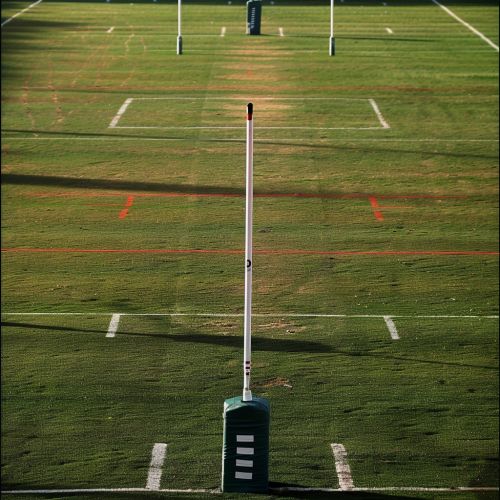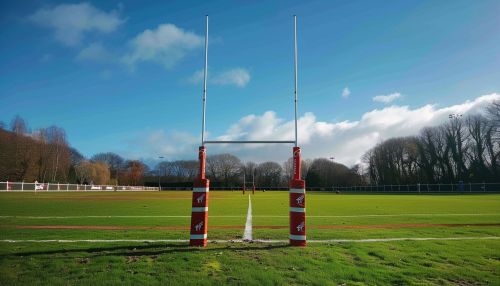Rugby Football
History
Rugby football traces its origins to the early versions of football played in England during the 19th century. The game is said to have been invented at England's Rugby School in 1823 when William Webb Ellis, a student, picked up the ball during a game of football and ran with it. This act, whether true or apocryphal, is commemorated at the school with a plaque bearing his name.


The game spread from Rugby School to other schools and universities in England. In 1871, the English Rugby Football Union (RFU) was formed to standardize the rules of the game. The RFU's rules, now known as rugby union rules, were adopted by most rugby-playing nations.
In the late 19th century, a schism occurred in the sport over the issue of professionalism. The Northern Rugby Football Union, later renamed the Rugby Football League, was formed in 1895 and established a new set of rules, now known as rugby league rules. This split resulted in two distinct forms of rugby football: rugby union and rugby league.
Rugby Union
Rugby union is played between two teams of 15 players each. The objective of the game is to score more points than the opposing team within 80 minutes of play. Points can be scored in several ways: a try, worth five points, is scored when a player touches the ball down in the opponent's in-goal area; a conversion, worth two points, is scored when a player kicks the ball over the crossbar and between the posts after a try; a penalty kick or drop goal, each worth three points, is scored when a player kicks the ball over the crossbar and between the posts during general play.
The field of play in rugby union is a maximum of 100 meters long and 70 meters wide, with additional in-goal areas of a maximum of 22 meters. The field is marked with lines for the halfway line, the 22-meter lines, the 10-meter lines, and the try lines. The field also features H-shaped goalposts at each end.


Rugby union is governed internationally by World Rugby, which organizes the Rugby World Cup every four years. The first Rugby World Cup was held in 1987 and has been contested by teams from around the world, with New Zealand, Australia, South Africa, and England having won the tournament multiple times.
Rugby League
Rugby league is played between two teams of 13 players each. Like rugby union, the objective of the game is to score more points than the opposing team. However, the scoring system in rugby league is slightly different: a try is worth four points, a conversion is worth two points, a penalty kick is worth two points, and a drop goal is worth one point.
The field of play in rugby league is similar to that in rugby union, but the in-goal areas are typically deeper, up to 10 meters.
Rugby league is governed internationally by the International Rugby League. The most prestigious tournament in rugby league is the Rugby League World Cup, first held in 1954. Australia, New Zealand, and Great Britain have been the most successful teams in the tournament's history.
Comparison of Rugby Union and Rugby League
While rugby union and rugby league share many similarities, there are key differences in the rules and gameplay. Rugby union allows for a contest for possession after a tackle, known as a ruck, while rugby league does not. In rugby league, the team in possession is allowed a set of six tackles to try to score; if they do not, possession is handed over to the opposing team. This rule does not exist in rugby union.
The number of players on the field, the scoring system, and the dimensions of the field also differ between the two codes. These differences have led to distinct styles of play and strategies in rugby union and rugby league.
Influence and Legacy
Rugby football, in both its union and league forms, has had a significant influence on other sports. American football and Canadian football both evolved from early forms of rugby football. The sport has also influenced the development of Australian rules football.
Rugby football has left a lasting legacy in the countries where it is played. It has contributed to national identities, particularly in countries like New Zealand, where the All Blacks' haka is a globally recognized symbol of the country. The sport has also played a role in social and political issues, such as during the apartheid era in South Africa, when the Springboks were a symbol of the regime.
See Also
History of Rugby Union History of Rugby League Rugby Sevens Women's Rugby
